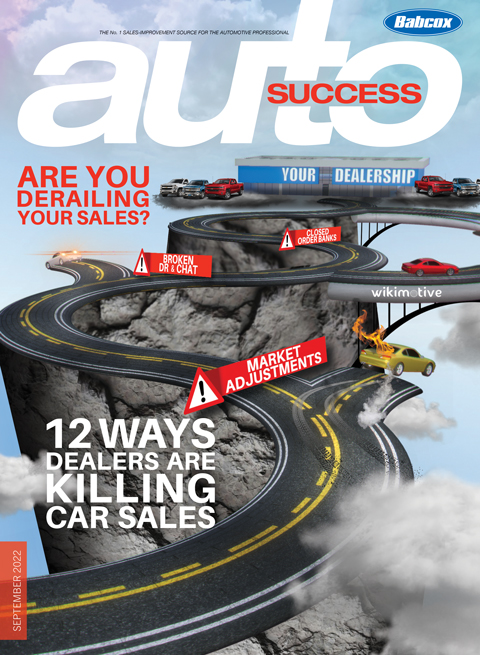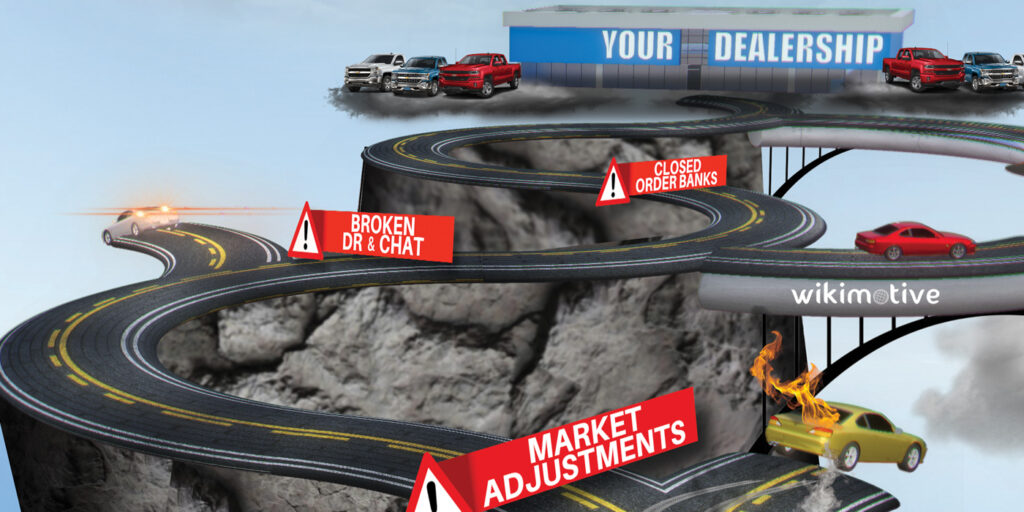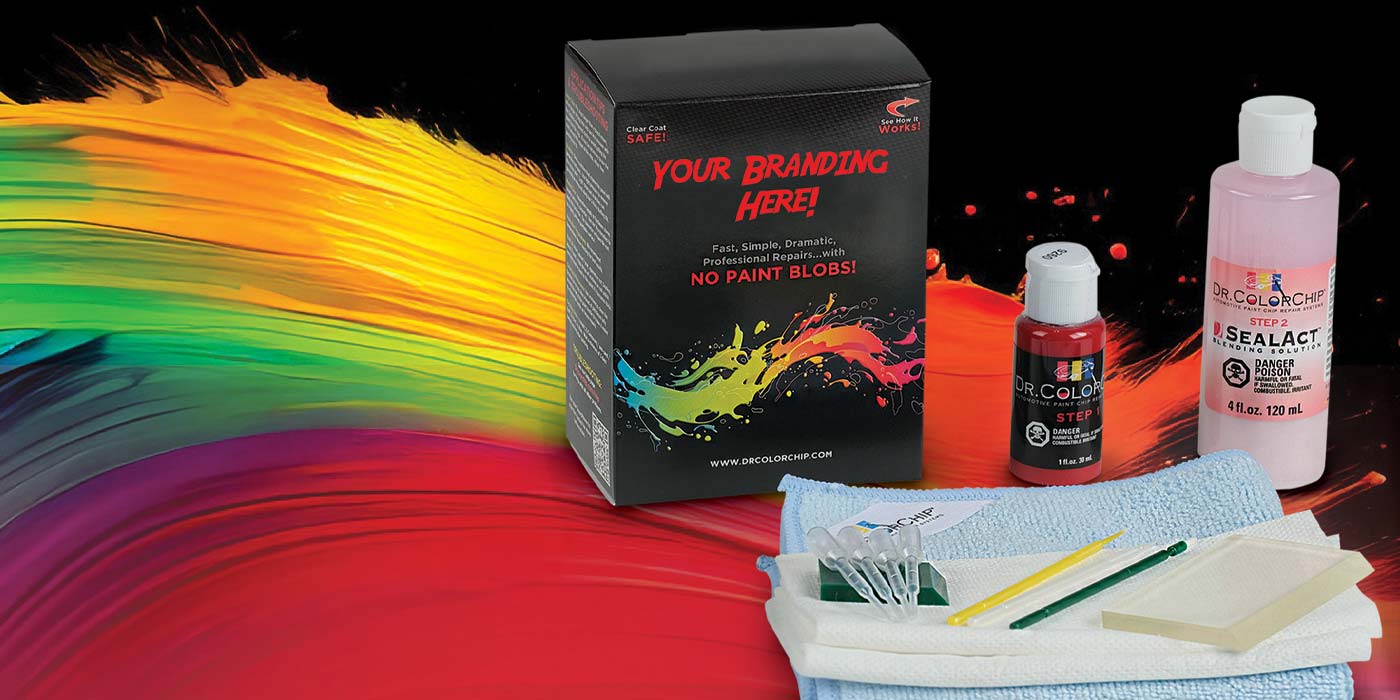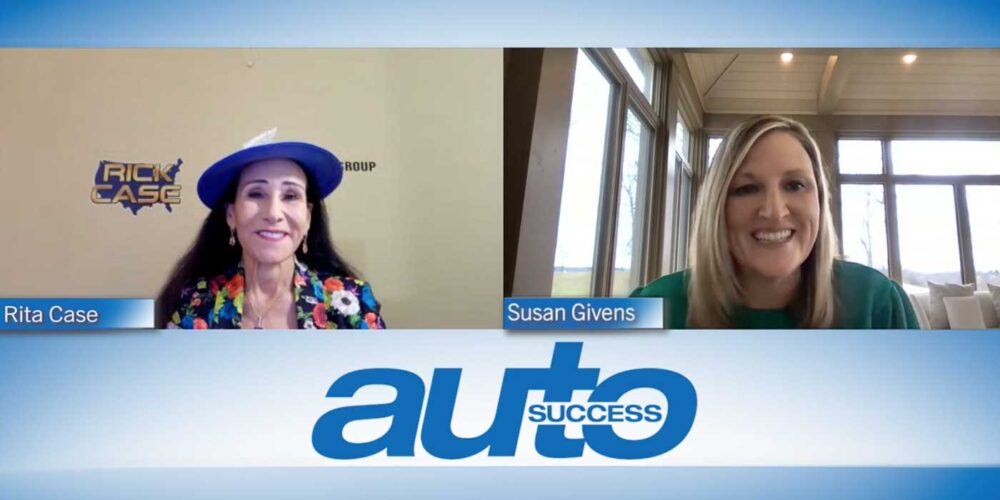12 Ways Dealers Are Killing Car Sales
Maybe you drive a demo or buy from your own store or another dealer you know. That means it has probably been years since you last had to research vehicles, find a dealer, talk price and take delivery. Now add in market-adjusted prices, supply issues, pre-ordering and all of a sudden you have no clue what it’s like to be on the other side of the desk. It’s rough, and you’re making it worse without realizing it! Read on as we expose where things are going wrong and provide actionable insights to help you see your store(s) through the eyes of the consumer.
I’ve been in the industry for 15 years — first with years in retail, and now through clients and contacts. I also haven’t had to buy like a normal consumer. At Wikimotive, we work closely with our dealer partners, and it has become increasingly apparent over the last year that there’s a large disconnect between dealer perceptions and consumer expectations. To better understand the divide, we did a study through our staff, and I punctuated it by going through the process just like a consumer does for my wife’s new vehicle. Turns out there are a lot of places where dealers are getting things wrong.

OEM Gibberish
Accord or Camry? SV or SL? EX or LX? Does this thing have a sunroof? Pick a brand or two that you don’t sell and go try to figure this out. OEM resources are hard to decipher and don’t list differences in a consumer-friendly format. Look at dealer videos on YouTube; almost all are quick walkarounds thick with salesman excitement and thin on meaningful details and differentiators. Vehicle research is where most consumers start their buying process, and relying on OEM resources is not doing you any favors.
As a dealer, it can be hard to insert yourself in the vehicle research process. Merchandising is part of this, and we’ll come back to that, but you can produce written and video content that’s a step above the rest. Model pages on your website should not be the basic OEM-provided junk. Instead, you should be writing detailed, unique content about the model, its trims and its features while highlighting what matters to that vehicle’s buyer demographic. This has the bonus of being great for your website SEO (Google rankings). You can also film quality walkarounds that explain trim differences and differentiating features and embed those videos on your custom model pages. It doesn’t require a huge budget to do better than 99% of the auto industry, and it will make you stand out because it will make consumer research easier.
The Needle in a Haystack
Are you way too focused on the way you see your inventory? You look at units on the ground, units in transit and how you’re going to source more used vehicles in volume. You’re looking at the macro, and this is all critically important, but you need to connect the dots to the consumer’s needs if they’re going to buy your car instead of your competitor’s.
Before the supply shortage, the average consumer wouldn’t drive more than an hour for a car. In 2022, our Wikimotive-team average was almost two hours in practice, and recent studies are indicating that the average consumer is willing to drive … wait for it … over five hours if it means they get what they want. I mentioned my wife and I shopped for her vehicle outside of my dealer contacts, and we found the vehicle she wanted, with the options she wanted, at a price we’d pay, two hours and 40 minutes away. We’re talking about a Ford here and not a unicorn model.
“Great, so people will drive further. What am I supposed to do about that?” you may be asking. You have to get found to begin with, but that comes down to good marketing. When most dealers don’t rank for “car dealer” centric Google searches just five miles from their store, there’s work to be done in this area. Covering effective modern marketing would require its own article, and then some, but we can touch on the basics here.
Do you know how your store ranks on Google five miles away? Not for your store name, but for “[Brand] Dealerships” or “Used Trucks For Sale”? It probably doesn’t rank, and you can change that. We can show you this with no obligation if you’d like to see a deep dive into how you’re ranking outside your backyard. Next, do you know what geography your paid search and social media marketing is covering? If your answer is anything about “my primary market area (PMA),” you’re doing this wrong. Consumers don’t care about your PMA; they care about finding a dealer who can help them, so think bigger. Again, we can help any dealer with this for free, and we regularly guide our dealer partners to new marketing revelations, even beyond the services we provide. The point is to think bigger and think through a consumer lens, so you can show up when and where the buyer is looking.
Bust the Barriers
Congratulations! An in-market consumer has reached your website, and now they’re looking for inventory. What will they find? How will they express their interest to you? What will you do to nurture that interest and convert that buyer, especially on a new car you don’t have? Let’s look at the issues that the Wikimotive team encountered in our own buying study. You are guilty of some of this and just need to know what to look for.
Availability and Selection: Subprime buyers may be shopping for an approval, but anyone with a choice is shopping for the vehicle. If you’re part of a group, share inventory. The more you have, the better the odds of a conversion and the easier it is to rank in Google search. Whether or not you’re part of a group, make sure you’re listing in-transit and in-production new vehicles. Be sure to also stock-in used inventory and get it on your website quickly. Make sure you’re maximizing the selection on your website any way you can because not having the car is the top reason in Q3 2022 that a website visit doesn’t turn into a lead, and most people will not visit a dealership if they didn’t see the car online first.
Custom Order: It doesn’t matter whether order banks are open or closed and whether delays are two weeks or six months. Feature the custom order message on all your new SRPs and throughout your navigation. Make sure it’s an easily accessible option, and create a Custom Order FAQ page with calls to action. Most consumers who are shopping right now bought their last vehicle when new and used inventory was plentiful. This means you do need to explain how this process works in terms they understand. Focus on making this seem approachable and low friction, so you get to have the conversation at all. It’s better to sell someone on getting on a wait list than lose your shot because you gave up due to closed order banks.
Pricing: Things cost a lot these days. Consumers are now willing to drive hundreds of miles to get the car at the price, and they’re quickly realizing that cars are more money than the last time they bought, so build value in the vehicles you have! Don’t just list your price. List market price and your lower price to convey that your seemingly high price is actually a deal. If a vehicle has a price-elevating feature or trim, list it in the image overlay so people don’t scroll past thinking you’re overpriced.
Pricing Transparency: A website that says “Call For Price” might as well say “Don’t Bother Calling.” Not being transparent about your pricing will just lead a consumer to assume the worst. You will get more leads by showing a high price than not showing one at all, while advertising an unattainably low price will only hurt your reputation without leading to a purchase in the majority of cases.
Market Adjustments / ADM: Wikimotive’s core mission is to help our dealers make money, so we’re all about maximizing profit. With that said, be careful with your practices around adjustments. Big market adjustments ($20k+) are creating serious problems with OEMs — who would love an excuse to erode the franchise model. More reasonable adjustments (under $5k), on the other hand, are a function of supply and demand, and most consumers won’t actually hold a negative perception because of this. What they will hold a negative perception of are your shady explanations. Be transparent about your market adjustments, and don’t try to hide them as a $3,000 seat-protection package. We encountered some wild and desperately far-reaching explanations for market adjustments during our study. They leave a bad taste in the mouth and almost always lead to a decision to shop elsewhere. Market adjustments are often OK and justifiable. Just be careful how you explain them, and use them in moderation to avoid reputation and OEM issues later.
Merchandising: This is a combination of factors, and doing a poor job can lead to you losing out on a lead that you might otherwise have received. Price is a part of how you digitally merchandise your inventory on your site, but there’s more to it. Dealers today are much better about good inventory photos than in years past, but many are still inconsistent. Photograph every used car quickly, and do the same for the new cars. The common response to this these days is “the new cars move too fast to bother with photos.” Save the photos you take, and you can re-use them for subsequent new cars of the exact same trim and color. This will save you time and money while increasing lead count. Make sure you’re also featuring the features that matter. Power windows and Bluetooth aren’t features in 2022 any more than wheels and doors are. List the differentiators and consider featuring them in your image overlay as well.
Failure to Communicate
The above are some of the more basic and potentially obvious pitfalls to understand and manage. Now we’re going to get into the egregious mistakes that are certainly costing you opportunities without you knowing it.
Value Trade: It’s nuts how bad this is at some dealerships, given the state of the market and the spread between easy-to-work-with dealers and those who aren’t. Especially in a time of increased prices, people want to know what their car is worth, and they might be too far from your store to drive in — again, our average was almost a two-hour drive. Start with a good trade tool on your site. We’ve seen the most success with TradePending. Next, don’t jerk people around with “you have to bring it in so we can see it.” You can start there to get a customer in your showroom, but if they’re two hours away, give them an alternative. You should have a process for them to grade their own vehicle or send photos, so you can provide a realistic conditional trade value over phone, text or email. Trust me, many dealers are doing it, so if you’re not, you’re going to lose out a significant percentage of the time. We encountered multiple cases of staff — and my wife — selling to a different dealer than they bought from because smart dealers made it easy, while others wouldn’t talk trade value over phone or email.
Communication: The Wikimotive team experienced countless cases of salespeople and sales managers exhibiting horrible written communication, from slow replies to skipped questions and careless grammar beyond reason. Not every dealer is guilty of this by policy, but police your people because some of them assuredly are. There is a pervasive attitude of “we already have your deposit, we don’t need to reply” or “cars are scarce, and we have what you want, so tough luck.” Both will lead to negative perceptions and possibly negative reviews while also costing you customers if they’re still shopping around. Another common issue was dealers ignoring communication preferences. For a huge number of customers, SMS text is preferred. Give them the option and make sure your people are well versed in communicating this way [sic] wit out riting lik tis. U gotit?
Chat and Digital Retailing: Test, test, test and test these features again. We ran into numerous cases of chat not connecting or an automated chatbot not transferring to a human when it got stuck, even during business hours. This wasn’t just during our staff study either … We regularly find issues like this during our routine audits for our clients and help them get it corrected. Go to your website and try to chat about buying, trading and scheduling service. Have others do the same, and hammer on it until you find the holes. There will be many, and the same is often true of your digital retailing tool, especially if you gave in and you’re using one that’s pushed on you by the OEM. They’re often clunky to use in practice and don’t submit partial leads to CRM, meaning you lose out on the lead if the customer drops off mid-process. Test your conversion tools or reach out to your trusted vendor partner to help you.
Don’t ASS-ume
It’s easy to look at a lot of this as minutia, but add it up and you’re leaving hundreds of leads and likely dozens of sales on the table each month. Slow new car allocation is no excuse, as you can turn your used inventory over two to four times per month if you maximize your opportunity.
It’s also easy to assume that most of this is someone’s job, so surely they’re on top of it. Some are, but most are not. Take your time and mystery shop your store(s). Think like a consumer who has a limited payment and specific needs in mind. Now have a friend do it. Have your spouse do it. Find the holes in your processes, communication, merchandising and technology, which are costing you real profit every month and probably worsening customer perception at the same time.
Your vendors should also be able to help with this. They should be able to police a lot of this for you and should be proactively coming to you with concerns when they find them. If that doesn’t describe your vendors, we offer free consultations, even in areas not related to our search and social marketing services. This, like our Wikimotive staff case study, is how we broaden our horizons so we can do the best job for our dealer partners and improve dealer profitability while also making happy customers that come back to you.














